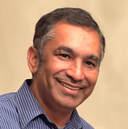|
Good Quality Real World Evidence is Hard to Come by
(Thursday, August 12, 2021) A report on a systematic analysis of the real world studies conducted with FDA-approved cancer drugs found that almost all such studies were of poor quality and hence led to erroneous conclusions. The list of challenges noted in the report are likely applicable to most real world data collected by researchers to either support conclusion from randomized clinical trials (RCTs) or find new usable data. Real world data (RWD) is used very broadly to describe all data from diverse sources such as medical records, insurance records, and registries. RWD could potentially lead to real world evidence (RWE) that may be used in support of regulatory approval for new indications or label changes of a previously approved product. FDA has been mandated under the 21st Century Cures Act to create pathways for using RWE for market approval and has offered enthusiastic support for the idea and approved a few products via these pathways. But for regulatory support, sponsors need to present reasonable quality of the data. Although patient registries offer the best source of data, the authors found that only 2% of the RWD published over the last 10 years for cancer drugs came from registries. The rest 98% of the data came from reports of case series which include data from individual patient experiences rather than large unbiased datasets available in registries. Industry-funded studies where the sponsors allocated resources to diligently collect data using prospective plans obviously contained better quality data compared to non-funded studies. Three pointers to good quality RWD are highlighted from this report. First, RWD must be based on prospective design. Basically, just like an RCT, the RWD study should also begin with a protocol describing the inclusion criteria for the RWD, established endpoints, well-defined data elements to be collected, quality checks, complete datasets, statistical analysis plan, and a study report describing all findings. Second, sponsors should try to build patient registries to collect unbiased and complete data sets. This can be done by pooling data from various sources into one database, or by working with healthcare providers to prospectively build patient registries. This would likely be the hardest part of the exercise. Third, build analytical models that the account for and address missing, incomplete, or non-coded data obtained from medical records and claims data. FDA guidance on RWD and RWE is barebones and provides limited help for the design of RWD studies. Sponsors need to take proactive steps to assure that the RWE generated is acceptable to FDA for approval decisions. It seems from the report that so far, RWD/RWE is not given the same attention as RCTs and that has led to a wealth of non-usable data. This can change easily and with much less investment than the RCTs. 
AUTHOR
Dr. Mukesh Kumar Founder & CEO, FDAMap Email: [email protected] Linkedin: Mukesh Kumar, PhD, RAC Instagram: mukeshkumarrac Twitter: @FDA_MAP Youtube: MukeshKumarFDAMap |
|

